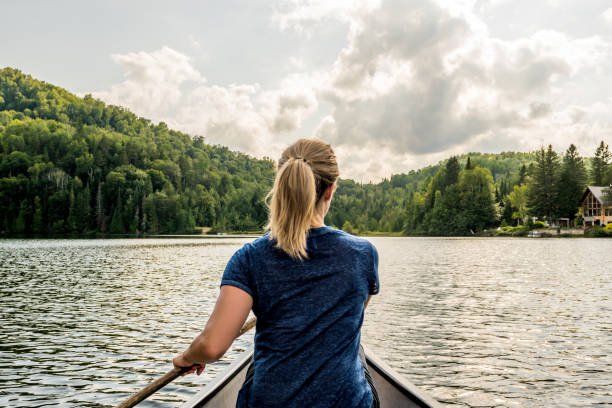
What is Adventure Therapy
Adventure Therapy is the use of experiences and actions in cooperative play, trust activities, problem-solving initiatives, high risk-taking, outdoor pursuits, and wilderness expeditions. These activities are designed to engage individuals, families, and groups on physical, cognitive, emotional, and behavioral levels. Adventure therapy draws from the Outward Bound process model to help participants overcome self-limiting beliefs. The study found that teens who participated in 21 days of adventure therapy were less likely to recidivate than those who received intensive outpatient treatment.
Types of adventure therapy
There are three main types of adventure therapy: wilderness therapy, basic adventure, and extended-stay camping. These three different types of structures can vary greatly, but the goal is the same
- Wilderness Therapy:
This typically occurs in a remote wilderness setting and is conducted in small group, multi-day settings. The team remains the same throughout the process unless someone quits. These programs often mimic Outward Bound training. - Basic Adventures:
These programs are typically held at or near where patients receive care, often for those enrolled in multi-day programs such as intensive outpatient programs or residential treatment. The crowds change as people move in and out of the facility, and sometimes the activities are more artificial (i.e. rock climbing in a therapy facility built specifically for therapeutic purposes, rather than in the “real” wild). ) - Long-term residential camping:
This places people in outdoor camps or “mobile training units” (such as learning to sail on a fast boat) for a long period of time, usually a year, to teach them how to develop a positive peer culture and face the challenges of everyday life inherent problems and deal with the natural consequences of their actions.
New research confirms that nature-based activities can improve mood and reduce anxiety.
Adventure Therapy Principles
- Action Center Therapy:
Traditional therapy takes place somewhat in a vacuum, with another person in a room. Adventure therapy takes people outside and puts them in a more “holistic” environment where body language can also be observed. - Unfamiliar environment:
Many people come to therapy resistant to change. This removes them from familiar surroundings, where it is easier – literally – to adopt a different perspective. - Changing Climate:
One of the purposes of adventure therapy is to introduce “good stress” into people’s lives to show them that they are capable of changing their behaviors and attitudes. - Assessing skills:
Seeing someone in their natural environment outside of the therapy room helps therapists gain a full understanding of the person that they may not be able to get to know in the therapy room and be able to observe what is applicable to someone’s life manifesting in this way global model. - Conducted in small groups:
This helps people develop a community and take into account the needs of others, showing evidence of success. - Focus on successful behaviors:
Often, therapy may focus on someone’s weaknesses/dysfunctions rather than their strengths or what they do well. - Therapist Shared Engagement:
Often, this type of therapy can feel like the playing field is leveled a bit because the therapist is participating in the same type of challenge.

Benefits of adventure therapy
Adventure therapy can help treat a variety of conditions, including
- Anxiety
- Depression
- Trauma
- post traumatic stress disorder
- Grief
- Fail
- Eating disorder
- Substance use disorder
- Schizophrenia
- Reduce the desire to commit suicide
- Reduce mood and depressive symptoms
- Desperation diminishes
- Promote self-efficacy
The study showed that the risk-taking group showed greater change than those who received alternating treatments or no treatment. Additionally, those who participated in short-term adventure therapy were able to maintain positive changes long-term when they were evaluated six months or so later.
Studies show improvements in symptoms among at-risk teens, as well as those with combat-related PTSD, body image issues, and more.

Adventure Therapy FAQs
- Adventure therapy is usually not covered by insurance and is expensive—an average of $500 per day, with some programs as high as $1,000 per day. While there are some funding programs, many people don’t have access to them.
- Most of them require a lot of time and not everyone can do it.
- There are some reports about ethical issues in the private treatment plan industry, and it is important to do good research.
- Wilderness therapy is a very intensive therapy. Make sure you (or your child) have spoken with your current therapist and discussed the pros and cons, including whether the rigor of this treatment is appropriate for your body.
- Since many or most of these programs are private pay organizations, they will be heavily promoted when you start searching for them online. A good suggestion is the programs listed by the Outdoor Behavioral Health Care Council that have been reviewed.
- If you have chosen a program, you can have an orientation meeting where both of you will make sure it is the right fit for you or your child. Be prepared to discuss your (or your child’s) mental health history, including other programs, therapies, or medications you have tried in the past.












